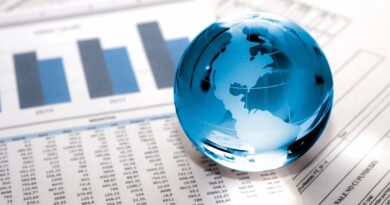Investments, how to take advantage of the strength of the US dollar
With central banks preparing to cut interest rates, the US dollar may still show very strong against other major currencies.
Here's how to take advantage of it.
The US dollar, trading around 1.0780 at the time of writing, flexes its muscles once again as the first quarter draws to a close, rallying again against the Japanese yen, Swiss franc and Chinese yuan.
The dollar/yen exchange rate recently hit a 34-year high just shy of 152, surpassing previous 2022 peaks that attracted intervention from the Bank of Japan at the time.
Since the beginning of last year, the dollar has risen nearly 20% against the yen.
Obviously monitoring the yen's decline in real time, Japanese Finance Minister Shunichi Suzuki issued his warning and said that authorities may take 'decisive steps' – a phrase previously used in autumn 2022, just before Japan intervened to sell dollars on the open market.
What bothers Japanese officials most is that the yen's fall accelerated even after the Bank of Japan began normalizing its super-loose monetary policy, prompting speculation that the central bank may have to move faster.
on that point, continuing to raise rates, regardless of any currency market pressure.
read also US small caps are an investment opportunity not to be missed in 2024 And obviously Japanese shares "welcomed" the weaker currency, as it was perceived as a further stimulus to exports, with the Nikkei benchmark which on Wednesday, a week ago , jumped nearly 1%.
The weakening of the yen tends to put pressure on other competing Asian currencies, not least the Chinese yuan, which has also fallen back towards the dollar.
Unlike the Nikkei, however, Chinese stocks took no comfort from the super-dollar's currency movement and retreated to near one-month lows on the week.
Although data showed Chinese industrial profits rose at the start of the year, political tensions and real estate concerns saw foreign investors continue to abandon China's stock market – with nearly $1 billion in outflows between last Monday and last Tuesday (data collected by Bloomberg via the Stock Connect system) and it must be said that this was the largest currency outflow since mid-January.
Chinese President Xi Jinping then met with the leaders of some US multinationals at the Great Hall of the People in Beijing, in an attempt by the Chinese government to convince foreign investors to return investments to the country and while international companies, for their part, they seek reassurance on the new regulations relating to the markets and on the transparency of the financial statements of Chinese companies.
But the dollar, more generally, has been inflated in recent weeks because it is driven by rumors regarding a Federal Reserve that is somewhat reluctant to implement the trajectory of reducing official rates until next year and beyond.
The problem with American monetary policy is that since the autumn of 2023 everyone has been amazed, and the Fed first and foremost, at the resilience of the US economy in response to the tightening of rates by the Central Bank aimed at taming inflation.
An example for everyone: since the Fed brought the Fed funds from 0% to 5.50%, unemployment, instead of rising, has actually fallen below 3.8%.
Recent better-than-expected US durable goods orders data reinforced the notion of a robust economy, while business spending on equipment showed signs of recovery and consumer confidence remained stable.
However, the strength of the dollar does not only depend on the strength of the American economy, but also on the more convinced expansionary monetary policy of the other central banks compared to the Fed.
With the Swiss National Bank taking the initiative last week against the other main banks central banks by cutting interest rates, the Swiss franc is at the top of the list of weak currencies against the dollar in Europe and the CHF/USD cross has reached its weakest point since November 3 last year.
Good news for Swiss exporters of course.
read also It's not too late to invest in Gold.
I'll explain how (and why) The growing sensation that other European central banks may follow the Swiss central bank and also adopt easing measures, well before the Fed, has put every central bank meeting and every central bank meeting under the microscope of economists.
single word from the bankers during the press conference.
The Swedish krona also recently hit its weakest levels of the year against both the dollar and the euro, after the Riksbank, Sweden's central bank, kept its reference rate stable at 4%, but said that inflationary pressures had eased enough to allow it to adopt the first of several cuts in key rates in the future.
And we come to the euro.
The European Central Bank, meanwhile, is increasingly confident that inflation will return to its 2% target by mid-2025 as wage growth moderates, reinforcing the case for lower interest rates, it said ECB board member Piero Cipollone.
Even Lagarde, during the latest ECB press conference, essentially stated the same thing.
European stocks in general can also benefit in 2024 from a strong dollar, because the goods and services of European exporters are more competitive in the US.
Indicatively, at this point, it does not seem wrong to invest a modest portion of your portfolios in short-term US treasuries.
They have an AA+ rating from Standard & Poor, they are ultra-liquid issues (from 60 billion to 70 billion dollars each) and, being government issues of a foreign state, their coupons are taxed at 12.5% as for our Italian BTPs.
Except that the dollar rate curve is above (and significantly) the euro rate curve, with the same rating.
The Bloomberg chart below gives an example.
On the 1-year maturity, for example, the Treasury 31.3.2025 yields approximately 5% gross, while the French OAT (which has the same AA+ rating, and this is why I excluded the BUND which is AAA from the comparison) expiring 25.2.2025 it yields 3.44% GROSS.
Is it worth making a bet on the 12-month dollar while bearing the exchange rate risk, i.e.
the devaluation of the dollar? Maybe yes.
But “with a grain of salt”: for example by not investing more than 5% of your portfolio in this treasury: US T 3.875% 31 MARCH 2025 PRICE: 99CENTS YIELD: 4.97% GROSS ISIN: US 91282CGU99 MINIMUM DENOMINATION: 1000 DOLLARS DISCLAIMER The information and considerations contained in this article should not be used as the sole or primary basis on which to make investment decisions.
The reader retains full freedom in his own investment choices and full responsibility in making them, since he alone knows his risk propensity and his time horizon.
The information contained in the article is provided for informational purposes only and its disclosure does not constitute and should not be considered an offer or solicitation to public savings.




